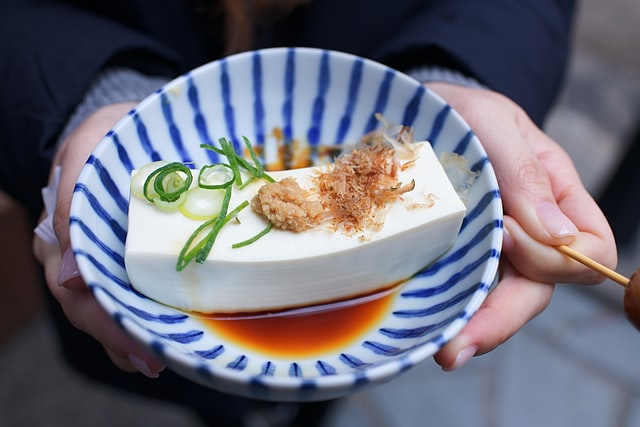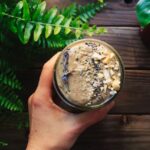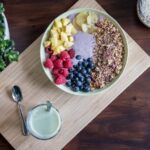If you’re wondering, “Why is my skin bad when I eat healthy?” you’re not alone. Many Americans are unaware of the dangers of certain foods. Refined carbohydrates and processed foods can cause inflammation, and acne can be exacerbated by the presence of leaky gut. A leaky gut can also result in hormonal imbalance and acne. Genetically modified soy (which accounts for 90% of soy sold in the U.S.) contains high levels of pesticide residue and can interfere with female hormones. Wheat, another main source of gluten, can also aggravate acne and cause inflammation.
Foods high in refined carbohydrates
There is a link between foods high in refined carbohydrates and acne. Refined carbohydrates have been stripped of their natural fiber, vitamins, and minerals. They include white bread, pasta, and rice. Even so-called healthy versions of processed foods contain a lot of refined sugar. These foods are notorious for contributing to acne and other skin problems. Instead of using refined sugar, try switching to natural sweeteners like honey, maple syrup, and bananas.
While there is no direct connection between dairy and acne, dairy products may be contributing to acne. Moreover, they are known to contain antioxidants that fight the formation of free radicals. Doctors agree that foods high in antioxidants have a direct relationship with healthy skin. People with high levels of antioxidants tend to have skin that is soft and smooth. You can also add green tea to your daily diet if you want to see an improvement in your skin.
Fried foods are another culprit. Fried foods, which are typically high in refined carbohydrates, are bad for your skin because they cause inflammation. The body races to correct the inflammation by producing excess oil. Instead, switch to avocado or olive oil when frying, or use an air fryer to get the crunch without damaging your skin. You might even be surprised at how much difference these small changes make.
Soy milk
The Weston A. Price Foundation has launched a full-scale attack on soy products, based on idealogy and animal studies that conveniently ignore more robust and high-quality studies. Fortunately, the Journal of Nutrition recently published a concise review of the evidence that proves soy is not harmful to your health. Hopefully, this will give you the information you need to decide whether soy milk is worth the risk to your health.
Soy milk is produced from the seeds of the soy plant, a member of the pea family. Soy is high in protein and isoflavones, a type of plant estrogen that regulates hormone levels. Researchers from the Chinese University of Hong Kong concluded that the consumption of soy products decreased the incidence of acne in yang-predominant study participants. The yang energy represents warmth, while the yin energy represents inhibition and heaviness.
The problem is that the soy milk sold in supermarkets is processed and likely contains GMO soybeans. Make sure to read the label to find out what’s in the milk you’re drinking and choose an organic brand if you’re worried about soy. Also, keep in mind that hormones can affect the way our bodies work and the way we think. The hormone estrogen is partially responsible for women having more body fat than men. While estrogen is helpful during pregnancy, it can make reaching athletic goals more difficult.
Tofu
Many people have wondered, “Why is my skin bad when I eat healthy?” Well, you might be surprised to learn that a balanced diet is the key to beautiful skin. This is because many foods contain high amounts of sugar, which can cause a spike in your blood sugar. Insulin helps your cells absorb sugar. If you aren’t sure why you’re getting acne on your face, consider these tips.
The reason you’re having trouble clearing up your skin is because you’re eating the wrong foods for your body. Some diets can actually make your skin worse! This is because they create an imbalance in the body, which leads to breakouts. Diets that are rich in fruits and vegetables are ideal for preventing breakouts. However, eating too much of one food group may be worse for your skin.
Omega-3 fatty acids
The fatty acids omega-3 help to maintain the integrity of cell membranes. These proteins act as barriers to harmful substances and a passageway for waste products and nutrients. They also influence a cell’s ability to hold water, which leads to moist, supple, wrinkle-free skin. Eating foods high in these fatty acids is beneficial for many reasons, including its ability to boost immune response.
The fatty acids found in fish, including sardines, mackerel, anchovies, and mackerel, are good for the skin. They serve as a building block for cell membranes and help protect the brain, reduce inflammation, improve bone health, and maintain a healthy skin barrier. These oils also help skin cells remain supple, making them resistant to sun damage.
Eating a healthy diet is crucial for healthy skin. Omega-3 fatty acids help reinforce the cell membrane and prevent the body from producing inflammatory substances, which contribute to wrinkles and dryness. Eating healthy, nutrient-dense foods is also essential for youthful, glowing skin. In addition to fish, omega-3 fatty acids, zinc, and selenium are associated with healthier skin.
Omega-3 fatty acids are good for your skin when you eat fish and walnuts. They have a number of health benefits, including lower rates of cardiovascular disease and Alzheimer’s disease. It also helps maintain healthy skin by inhibiting inflammatory molecules and retaining moisture. When consumed in large quantities, omega-3s have numerous skin benefits. They promote a healthy glow, and your skin will thank you.
Flaxseeds
You’ve probably heard that antioxidants can help with skin problems. In fact, they can even improve the texture of your skin. Eating plenty of antioxidant-rich foods can also improve your cholesterol and reduce inflammation. Some of these include fish, which is an excellent source of protein and omega-3 fatty acids. These nutrients fight inflammation and improve skin health. Eat more fish, and you’ll be amazed at the results!
Some people have trouble determining what’s causing their acne or blemishes. An elimination diet helps pinpoint the culprit, and usually involves removing a single food group at a time and reintroducing it slowly. If you have trouble with your skin despite your dietary efforts, a heart-healthy diet will improve your overall health and reduce the appearance of wrinkles and blemishes.
Chocolate
If you love chocolate, you may be wondering: can it really cause acne? The debate over this topic has been going on for decades. Although the recent study found no link between chocolate and acne, it does seem to be a cause for concern. While it does raise the risk of developing blackheads, it doesn’t prove that chocolate causes acne. There are several possible reasons for this, including chocolate’s high sugar and dairy content.
The sugar content of chocolate may be a contributor to skin problems, though it shouldn’t be the only factor. Several studies have shown that chocolate can actually increase insulin levels, which can lead to acne. But other studies have found no correlation between chocolate and acne. The truth is, it depends on the individual. Ultimately, everyone is different and it’s impossible to tell if chocolate is causing breakouts or not.
Several decades of research has not found a definitive link between chocolate and acne, but it’s possible that it could affect your acne. A study from the American Osteopathic College of Dermatology found that 70 to 85 percent cacao solids contains almost twenty-five grams of sugar and 25 grams of saturated fats. The sugar and saturated fats contribute to increased insulin levels in the body, which make acne breakouts worse. While the study found that chocolate rarely causes acne, it does have the potential to negatively affect your skin.









